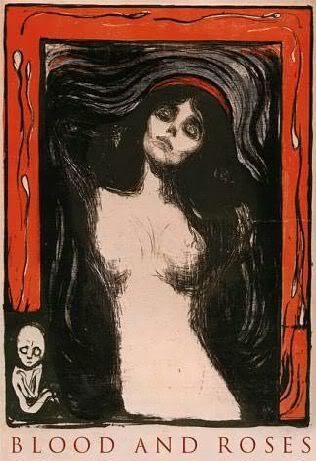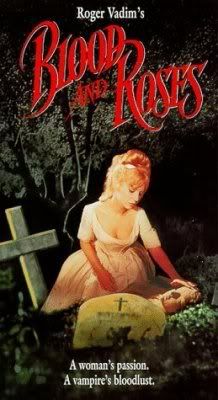RARE RECORDING WITH THE MUSIC OF THE MOVIE

English title: BLOOD AND ROSES
Production: France/Italy 1960
Director – Roger Vadim
Screenplay – Vadim & Roger Vailland
Story – Claude Brule & Claude Martin
Based on the Short Story Carmilla by J. SheridanLe Fanu
Photography – Claude Renoir
Cast:
Annette Vadim (Carmilla Von Karnstein)
Mel Ferrer (Count LeopoldoVon Karnstein)
Elsa Martinelli (Georgia Monteverdi)
"This film has three outstanding features: The spectacular location, Hadrian's Villa, Claude Renoir's ravishing color and b&w cinematography, and an exquisite score featuring the rarely-used Irish harp.
Annette Stroyberg and Elsa Martinelli are both interesting.
It's above average for Vadim."

"This was the second film made from J. Sheridan Le Fanu’s oft-filmed short story Carmilla (1872). (The first was claimedlyCarl Dreyer’s Vampyr (1932), althoughthe connection there is very slim). Blood and Roses comes from Roger Vadim, the French director of various softcore features in the 1960s such as theBrigitte Bardot breakthrough, And God CreatedWoman (1957) and the great Barbarella(1968).
Hammer Films had spurred off a substantial revival of Gothic horrorwith their twin successes The Curse of Frankenstein(1957) and Dracula/The Horror of Dracula(1958) and it seems almost certain that Blood and Roses was intended to ride that wave of success.
Hammer Films themselves later spunoff a series of Carmilla films, beginningwith The Vampire Lovers (1970), withwhich inevitable comparisons arise. (See below for the Hammer films). The one thing that the Hammer comparisonmakes one realize is how much Terence Fisher et al tied Hammer’s visionof the Gothic to a specific period and time – when Bloodand Roses updates the Le Fanu story in a modern setting onehas to consciously jolt themselves to realize that the presence of planes, sports-carsand stereos is not anachronistic.
Opposing the rich, flamboyance of Hammer’streatment, Vadim’s vampirism is a lot more soft-focus and softcorein intent. There is more eroticism than horror to the film (and Britishcensors cut out much of the softcore lesbianism anyway). In fact there is verylittle vampirism going on altogether – there is a ludicrously tame scenewhere Annette Vadim pursues a servant girl, which just fades out just asVadim closes in on her. And the plot doesn’t really do much with the possession/vampirism themes. The atmosphere Vadim creates is occasionally compulsive– there are undeniably striking shots, like the lake lit up by fireworks, and in particular the surrealistic fevre dreamthat turns black-and-white with bodies swimming upside down outside Frenchwindows and an operation where the surgeon’s gloves are all tinted bloodred.
The beautiful photography, classy music, elaborate costumes and ornatelylayed-out gardens all make for a sumptuously assembled film."

THE DREAM SEQUENCE

No comments:
Post a Comment